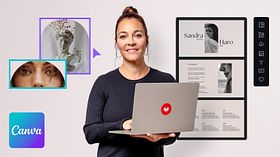"Sustainability" in Object Design: Some Strategies

Hello, I'm Andrea Bandoni, a designer and researcher passionate about object creation. Over the years, I have sought to conduct in-depth research before designing objects to ensure they have a strong purpose, thus provoking reflections and new perceptions through design.

Our world today presents various urgencies, and one of them is caused by the environmental crisis. It is essential for all creatives to remember that their projects generate impacts - whether positive or negative - on the surrounding ecosystems. As early as the 1970s, designer Victor Papanek, in his book "Design for the Real World," warned us: there are few professions more harmful than industrial design.
Despite the wear and tear of the term "sustainability" - a vague term that has been used in various occasions, I understand "sustainable design" here as one that begins to indicate necessary changes to improve our relationship with the planet. Therefore, I share below some strategies that I consider basic or fundamental when thinking about "sustainable" objects, that is, those that make sense in today's world.
Prolonging the Life of Objects
Urban waste is one of the most serious problems today, directly related to pollution. Faced with this reality, one strategy is to seek to prolong the life of objects, and an approach that fascinates me is reuse. The project "The Extinction of Cream Cheese Cups," for example, shows how a mere package can gain new life as a daily object, avoiding waste. In Brazil, the reuse of glass cream cheese cups (similar to Nutella jars) was a mass phenomenon until they were almost completely replaced by plastic packaging - a change with no design involvement.

In a different way, the idea of "upcycling" or "reproposition" involves modifying the original product, reviewing its function or form. The project "You Can't Lay Down Your Memories" by Dutch designer Tejo Remy is an inspiring example of this concept. He collected second-hand furniture drawers and proposed a chest of drawers made from various drawers, in a completely new format that blends order and disorder. The object makes us reflect on how we store our memories and is on the borderline between art and design.
Circular Approach
Embracing a circular approach is essential to reduce environmental impact, and here I highlight the "Cradle-to-Cradle" methodology, which was explained in an important book in the early 2000s. Instead of designing for recycling – which, according to the authors, would mean making products "less bad" - designers are encouraged to design products so that, after their useful lives, they become 'food' for new products. This approach rejects the idea of waste; materials are "borrowed" from nature and must return as "nutrients."

In this way, all products have to be part of cycles, whether biological or technological. In the technological cycle, materials should be seen as service products. For example, a TV, after being used and becoming obsolete, would return to the factory to be disassembled and have its components reused.
In the biological cycle, product materials are returned directly to the biosphere in the form of compost or other nutrients, from which new materials can be created. Biodegradable packaging or fabric made from natural fibers are examples of this type of product.
Materials and Processes
The biological cycle proposed in "Cradle-to-Cradle" aligns with the work of various contemporary designers who use organic materials and adopt clean processes. Often these processes are artisanal, such as Brazilian designer Inês Schertel, who uses the wool from the sheep she raises in her projects.
It is increasingly common among designers to create their own 100% biodegradable materials, with organisms such as algae, mycelium, and bacteria, and from there develop objects - as the studio Klarenbeek&Dros does. Collaborating with living organisms with strong technological support, as designer Neri Oxman does, is also a promise of harmonious interaction between design and nature.

Reflecting and Imagining New Worlds
We are experiencing a major transformation in design, where concern for the environment and social justice plays a crucial role. As designers, we have the power to influence the future, and this is a unique opportunity. When creating objects, the responsibility mentioned by Papanek resonates deeply: "you are responsible for what you put into the world" - and for the effects these things have on it. Critical thinking in object design goes beyond a trend; it is a necessity: let's imagine together new worlds where design not only enchants but also takes care of the planet. I am curious to see how you, like me, will be able to creatively integrate these concepts into your projects.
Want to know more? Check out my course Object Design beyond Aesthetics at Domestika.





0 comments